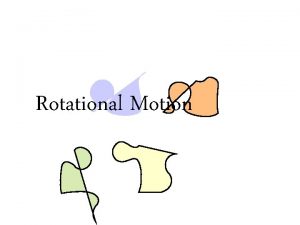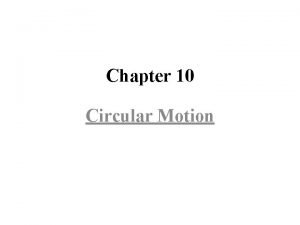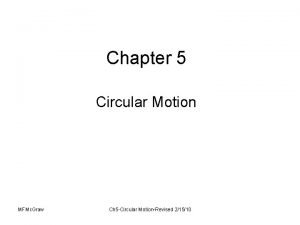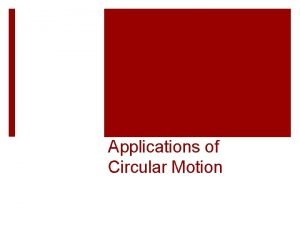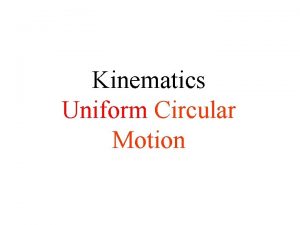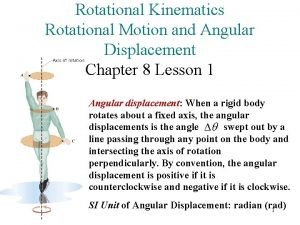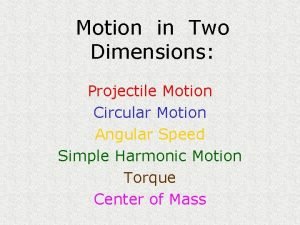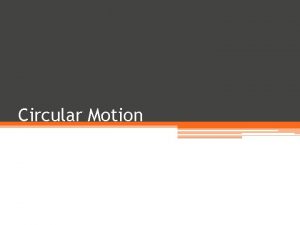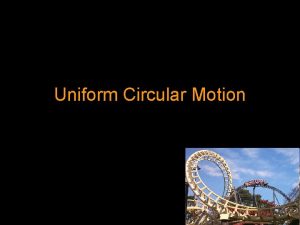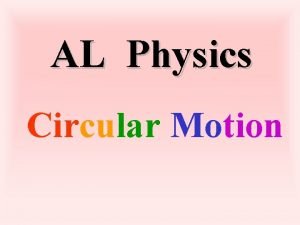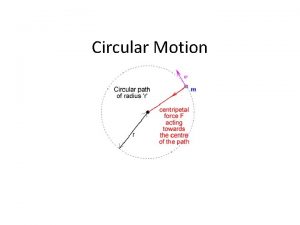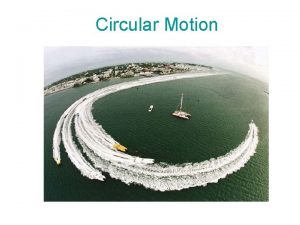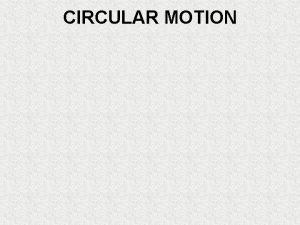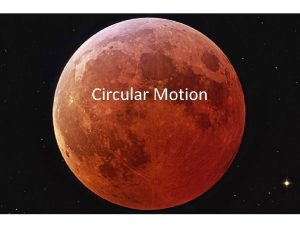LAWS OF MOTION LAWS OF MOTION CIRCULAR MOTION











- Slides: 11

LAWS OF MOTION

LAWS OF MOTION CIRCULAR MOTION

LAWS OF MOTION CIRCULAR MOTION Ø Where m is the mass of the body. This force directed towards the centre is called the centripetal force

LAWS OF MOTION Ø For a stone rotated in a circle by a string, the centripetal force is provided by the tension in the string. The centripetal force for motion of a planet around the sun is the gravitational force on the planet due to the sun. For a car taking a circular turn on a horizontal road, the centripetal force is the force of a friction Ø The circular motion of a car on a flat and banked road given an interesting application of the laws of motion.

LAWS OF MOTION Motion of a car on level road: Ø Three forces act on the car I) The weight of the car, mg II) Normal reaction, N III) Frictional force, f Ø As there is no acceleration in the vertical direction N – mg = 0 N = mg Ø The centripetal force required for circular motion is along the surface of the road, and is provided by the component of the contact force between road and the car tyres along the surface. This by definition is the frictional force

LAWS OF MOTION Ø Note that it is the static friction that provides the centripetal acceleration. Static friction opposes the impeding motion of the car moving away from the circle. Using equation (1), we get the result Ø Which is independent of the mass of the car?

LAWS OF MOTION Ø Motion of a car on a banked road Ø We can reduce the contribution of friction to the circular motion of the car if the road is banked. Since there is no acceleration along the vertical direction, the net force along this direction must be zero. Hence, N cosθ = mg + f sinθ → (3) Ø The centripetal force is provided by the horizontal components of N and f.

LAWS OF MOTION

LAWS OF MOTION Ø Comparing this with Eq (2) we see that maximum possible speed of a car on a banked road is greater than that on a flat road.

LAWS OF MOTION At this speed, frictional force is not needed at all , when the necessary centripetal force is provided. Driving at this speed on a banked road will cause little wear and tear of the tyres.

LAWS OF MOTION Thank you…
 Repeating lines in a hairstyle.
Repeating lines in a hairstyle. Charles de secondat
Charles de secondat Angular acceleration formula with radius
Angular acceleration formula with radius Recipe language
Recipe language Circular motion formulas
Circular motion formulas Chapter 10 circular motion
Chapter 10 circular motion Circular motion
Circular motion Applications of circular motion
Applications of circular motion Circular motion
Circular motion Si unit of angular velocity
Si unit of angular velocity Dynamics of uniform circular motion
Dynamics of uniform circular motion Formula for acceleration in circular motion
Formula for acceleration in circular motion




